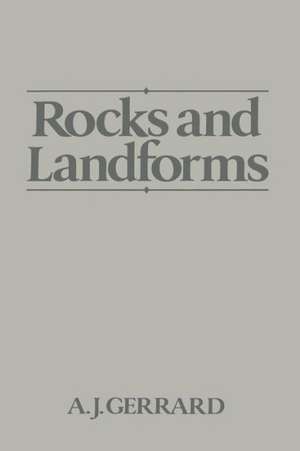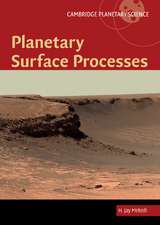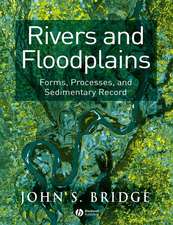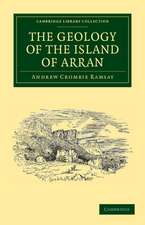Rocks and Landforms
Autor John Gerrarden Limba Engleză Paperback – 28 ian 2012
Preț: 390.46 lei
Nou
Puncte Express: 586
Preț estimativ în valută:
74.72€ • 79.90$ • 62.30£
74.72€ • 79.90$ • 62.30£
Carte tipărită la comandă
Livrare economică 18 aprilie-02 mai
Preluare comenzi: 021 569.72.76
Specificații
ISBN-13: 9789401159852
ISBN-10: 9401159858
Pagini: 336
Ilustrații: XVI, 320 p.
Dimensiuni: 155 x 235 x 18 mm
Greutate: 0.47 kg
Ediția:Softcover reprint of the original 1st ed. 1988
Editura: SPRINGER NETHERLANDS
Colecția Springer
Locul publicării:Dordrecht, Netherlands
ISBN-10: 9401159858
Pagini: 336
Ilustrații: XVI, 320 p.
Dimensiuni: 155 x 235 x 18 mm
Greutate: 0.47 kg
Ediția:Softcover reprint of the original 1st ed. 1988
Editura: SPRINGER NETHERLANDS
Colecția Springer
Locul publicării:Dordrecht, Netherlands
Public țintă
ResearchCuprins
1 General background.- Spatial scale.- Rock resistance.- Mechanisms of rock control.- Conclusions.- 2 Rock type and landform assemblages.- Igneous rocks.- Metamorphic rocks.- Sedimentary rocks.- Assessment of landform assemblages.- Spatial distribution of rock types.- Other rock classifications.- Conclusions.- 3 Landscape evolution and rock properties.- Slope angle, form and processes.- Denudation rates.- Slope development on horizontally bedded rocks.- Drainage basin properties.- Bedrock meanders.- Drainage patterns.- Conclusions.- 4 Rock strength and resistance.- Hardness and toughness.- Porosity, permeability and water absorption.- Strength and rock deformation.- Appraisal.- 5 Resistance to weathering.- Chemical weathering.- Chemical weathering of minerals.- Chemical weathering of rocks.- Physical weathering.- Conclusions.- 6 Weathering profiles and landform development.- Weathering front.- Weathering profile differentiation.- Weathering grades.- Weathering depths.- Weathering and the water table.- Spatial patterns of weathering profiles.- Duricrusts.- Weathering profiles and slope form.- Weathering and rock strength.- Weathering and slope instability.- Threshold slopes.- 7 Instability in jointed and fissured rock.- Characteristics of jointed rock.- Unloading joints and rebound phenomena.- Models of jointed rock behaviour.- Rock mass strength classifications.- Strength equilibrium slopes.- Modes of rock failure.- 8 Landforms on granitic rocks.- Inselbergs.- Domed inselbergs (bornhardts).- Tors (boulder inselbergs).- Landscape types.- Conclusions.- 9 Properties and landforms of mudrocks.- Terminology of mudrocks.- Composition of mudrocks.- Consolidation and unloading of mudrocks.- Consistency limits.- Microstructure.- Macrostructure.- Shear strength.- Weathering effects.- Swelling and shrinkage.- Landslides and slope development.- Mudslides.- Sensitive clays.- Conclusions.- 10 A rock-landform synthesis.- Landforms of glacial erosion.- Marine cliffs and shore platforms.- Rocks, landforms and climate.- Conclusions.













